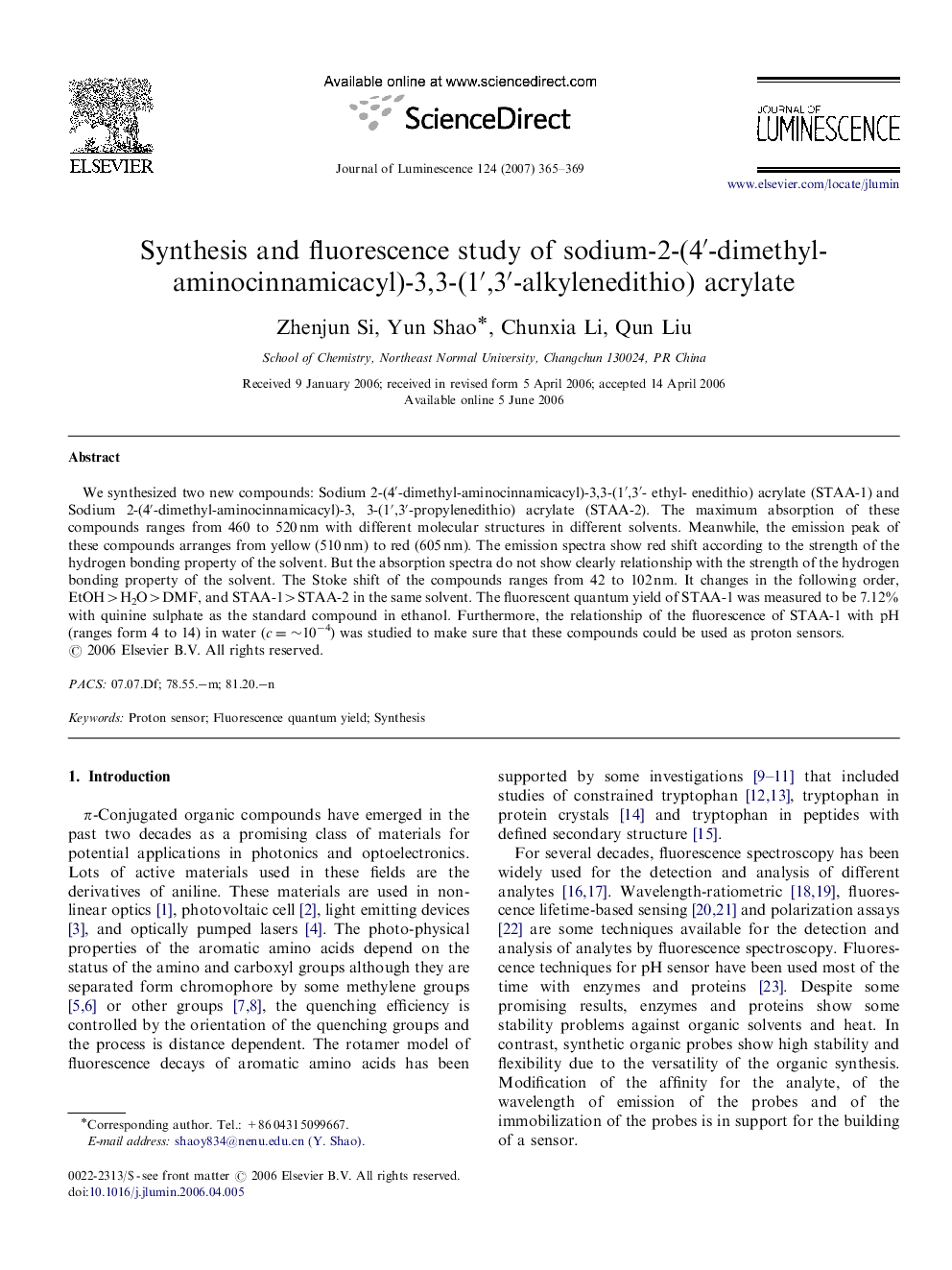| Article ID | Journal | Published Year | Pages | File Type |
|---|---|---|---|---|
| 5404260 | Journal of Luminescence | 2007 | 5 Pages |
Abstract
We synthesized two new compounds: Sodium 2-(4â²-dimethyl-aminocinnamicacyl)-3,3-(1â²,3â²- ethyl- enedithio) acrylate (STAA-1) and Sodium 2-(4â²-dimethyl-aminocinnamicacyl)-3, 3-(1â²,3â²-propylenedithio) acrylate (STAA-2). The maximum absorption of these compounds ranges from 460 to 520Â nm with different molecular structures in different solvents. Meanwhile, the emission peak of these compounds arranges from yellow (510Â nm) to red (605Â nm). The emission spectra show red shift according to the strength of the hydrogen bonding property of the solvent. But the absorption spectra do not show clearly relationship with the strength of the hydrogen bonding property of the solvent. The Stoke shift of the compounds ranges from 42 to 102Â nm. It changes in the following order, EtOH>H2O>DMF, and STAA-1>STAA-2 in the same solvent. The fluorescent quantum yield of STAA-1 was measured to be 7.12% with quinine sulphate as the standard compound in ethanol. Furthermore, the relationship of the fluorescence of STAA-1 with pH (ranges form 4 to 14) in water (c=â¼10â4) was studied to make sure that these compounds could be used as proton sensors.
Related Topics
Physical Sciences and Engineering
Chemistry
Physical and Theoretical Chemistry
Authors
Zhenjun Si, Yun Shao, Chunxia Li, Qun Liu,
